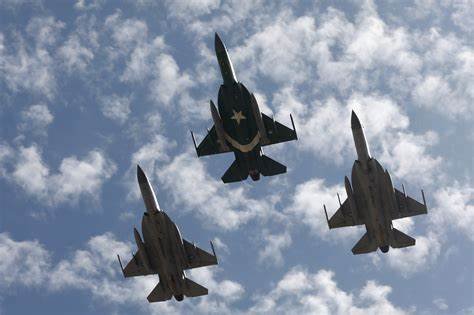Pakistan’s recent acquisition of fighter jets and submarines has raised eyebrows and sparked questions about the country’s ability to finance such acquisitions in the midst of a fiscal crisis. With limited resources and pressing socio-economic challenges, the decision to invest in military hardware has ignited debate about priorities, transparency, and the implications for regional stability.
Pakistan’s acquisition of advanced military equipment, including fighter jets and submarines, comes at a time when the country is grappling with a severe economic crisis. High inflation, mounting debt, and dwindling foreign reserves have strained the country’s finances and forced difficult choices regarding budget allocations. In this context, the decision to allocate significant resources to defense procurement raises concerns about the opportunity cost and the impact on critical sectors such as health, education, and infrastructure.
Despite these economic challenges, Pakistan has sought to modernize its armed forces and enhance its defense capabilities, citing strategic imperatives and the need to maintain a credible deterrent. The acquisition of fighter jets and submarines is viewed as essential for ensuring national security and countering perceived threats from neighboring countries. Additionally, Pakistan’s geopolitical positioning in a volatile region further underscores the perceived need for a robust defense posture.
However, critics argue that the prioritization of defense spending over socio-economic development exacerbates inequalities and perpetuates a cycle of militarization at the expense of human welfare. They question the wisdom of investing in expensive military hardware when the country is facing pressing challenges such as poverty, unemployment, and inadequate healthcare infrastructure. Moreover, concerns have been raised about the lack of transparency and accountability in defense procurement processes, with allegations of corruption and inefficiency tainting the acquisition process.
The financing of Pakistan’s defense acquisitions amidst an economic crisis raises questions about the sources of funding and the sustainability of such expenditures. While some argue that defense procurement is funded through budget allocations and revenue generation, others speculate about the role of external financing and military aid in supporting these acquisitions. Pakistan’s strategic alliances and partnerships with countries such as China, Saudi Arabia, and the United States are seen as potential sources of support for its defense modernization efforts.
Furthermore, the acquisition of fighter jets and submarines has broader implications for regional security dynamics and strategic stability. Pakistan’s military buildup, coupled with tensions with neighboring India and ongoing conflicts in the region, has raised concerns about an arms race and the potential for escalation. The acquisition of advanced military hardware could fuel existing security dilemmas and exacerbate regional tensions, undermining efforts to promote peace, dialogue, and cooperation.
In response to these concerns, advocates of Pakistan’s defense acquisitions argue that they are driven by legitimate security concerns and the imperative to safeguard national sovereignty. They emphasize the need for a credible defense posture to deter external threats and protect Pakistan’s territorial integrity. Moreover, they contend that defense spending contributes to job creation, technology transfer, and industrial development, thereby stimulating economic growth and enhancing national resilience.
However, the challenge lies in striking a balance between national security imperatives and socio-economic development goals. Pakistan’s leadership faces the daunting task of navigating competing priorities and managing limited resources amidst complex geopolitical dynamics. The decision to invest in defense procurement must be guided by strategic foresight, fiscal prudence, and a commitment to transparency and accountability.
In addition, Pakistan’s acquisition of fighter jets and submarines amidst an economic crisis reflects the complex interplay between security imperatives, economic constraints, and regional dynamics. While defense modernization is viewed as essential for ensuring national security and maintaining strategic parity, questions persist about the opportunity cost, financing mechanisms, and implications for regional stability. As Pakistan navigates these challenges, it must prioritize investments that promote sustainable development, foster regional cooperation, and address the needs of its people.

